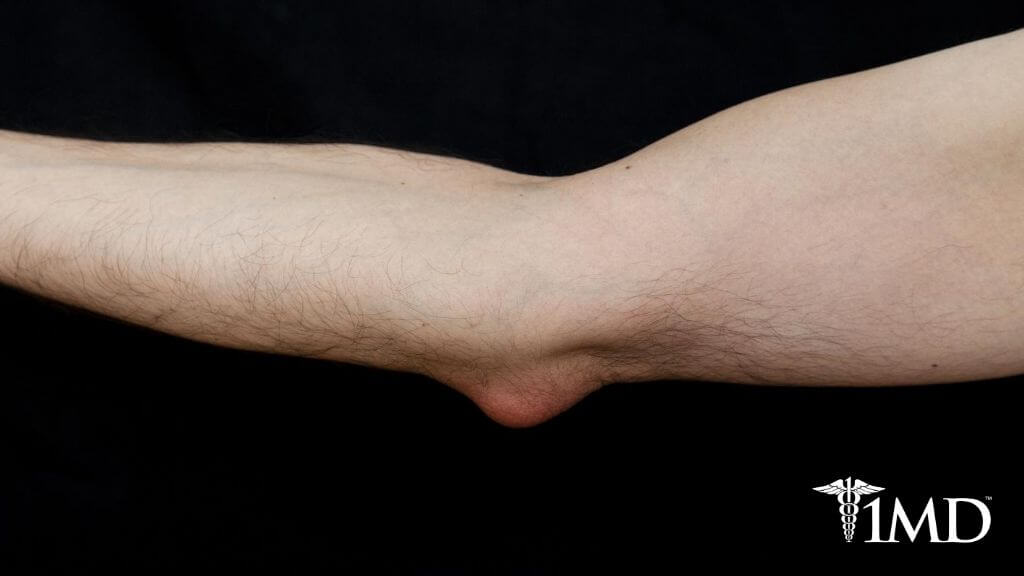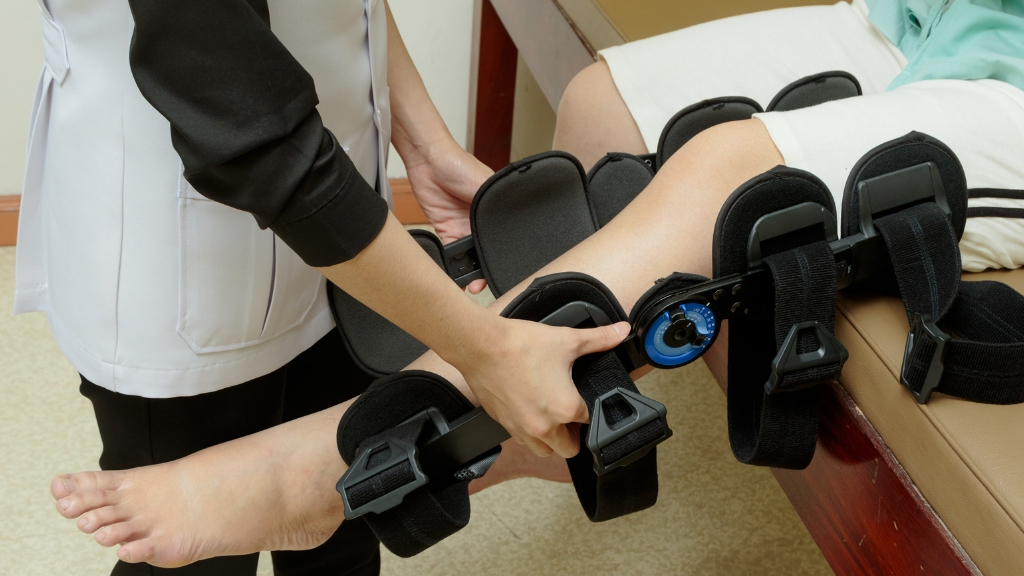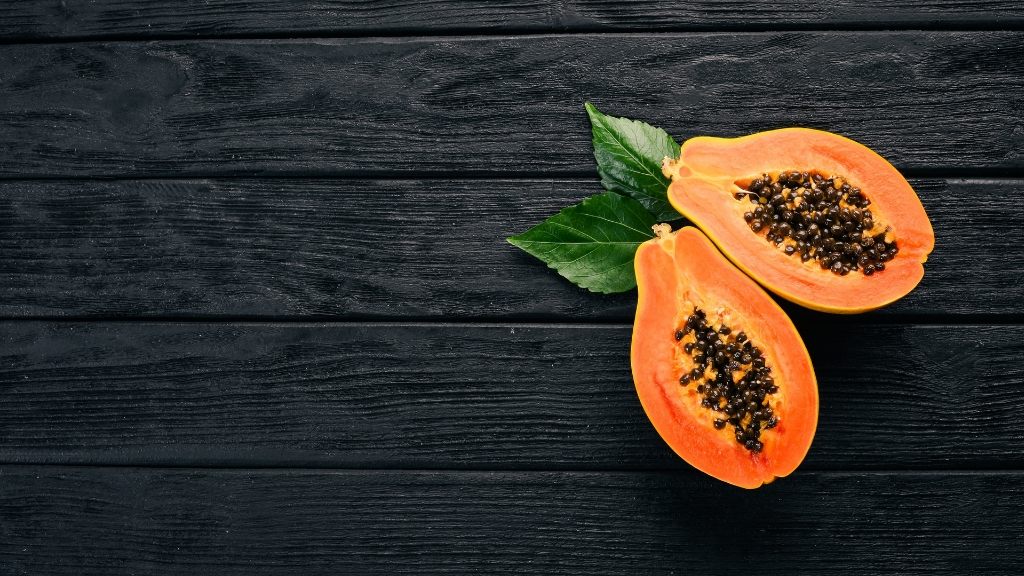What Is Bursitis? Prevention and Treatment Tips + Signs and Symptoms
7 minute read
Bursitis is an inflammatory condition commonly confused with arthritis. The two conditions, despite having inflammation in common, are markedly different.
Arthritis is a joint condition marked by the degeneration of connective tissue and bursitis is inflammation of the sac that surrounds your joints. Understanding the difference will help you to better identify bursitis so that you can seek the appropriate treatment and pain relief—here’s what you need to know to prevent, identify, and treat bursitis.
Bursitis Explained
Bursitis is inflammation of the synovial bursa, which is a fluid-filled sac that serves as a cushion in your joints. The sac sits between your bones and either skin, muscles, or tendons.
Because the joint area becomes inflamed and painful, many assume they have arthritis. The type of bursitis you have will vary according to its location, as it can develop in your elbows, hips, knees, shoulders, and even your buttocks.
The most common causes of bursitis are sports injuries and repetitive movements, but there are a number of potential causes you should be aware of, such as:
♦ Poor posture and bad walking habits
♦ Metabolic conditions like diabetes
♦ Some types of arthritis
♦ Side effects from certain medications
♦ Stress on soft tissues from an abnormal bone position

The symptoms of bursitis are similar to those of arthritis conditions, so it is important to seek an accurate diagnosis should any of the symptoms be noted. Bursitis causes inflammation and tenderness around the joint and surrounding muscles. Sometimes it can occur suddenly and will last anywhere from days to weeks.
Typically bursitis can resolve itself with rest and treatment, but it may reoccur in the same area of your body at a later time.
Living With Bursitis
If bursitis does not go away on its own, treatment focuses on reducing pain and inflammation. The good news is that with prompt and efficient treatment, the condition will not typically result in permanent damage.
In extreme and rare cases, you may have to seek professional help from a specialist. There are a number of potential treatment options you can try to help reduce inflammation and therefore relieve pain from your joints.
Rest and Stretch
Resting the affected area is one of the best ways to relieve bursitis pains. Because the cause of bursitis is often repetitive movements, ceasing this activity will reverse the problem.
Movements may be painful, but light stretching will actually be beneficial. Gentle movements can help keep your joints limber and gradually strengthen them towards healing. Just remember to get adequate rest as well and never over-do the stretching.

Splints
Because muscle overuse can contribute to bursitis and the damage of soft tissues, the first form of treatment that works is to reduce movement. Splints or braces prevent movement so that the affected area is limited and can rest.
Resting often alleviates the inflammation and pain. If you must be active, then use splints or braces to support the affected area as much as possible during movement.
Hot and Cold Therapy
Cold compresses help to reduce swelling, but they are more effective in the first 48 hours as opposed to later. After 48 hours has passed since the symptoms began, or if the pain becomes chronic, you are better off with heat therapy.
Dry or moist heats can be equally effective, so you can apply a heating pad or take a warm bath to soothe muscles and relieve joint pain.
Drugs
Over the counter NSAIDs are good for relieving inflammation and pain. If the pain is severe, then your doctor may prescribe something stronger than aspirin or ibuprofen. Your doctor may even give you corticosteroid injections to relieve joint pain directly at the source. Take care not to rely on medications because overuse can often come with unpleasant side effects.
Physical Therapy
Physical therapists can help to relieve inflammation through a variety of methods. Laser and water therapy are common as well as soft tissue and joint mobilization.
| Related: 9 Top Stretches to Help Relieve Knee Pain on Cold Days |

Therapy may also include an analysis of your sitting and walking postures as well as a personalized exercise program. Be sure to follow what your physical therapist says exactly so as not to cause any additional strain or pain.
An Anti-Bursitis Diet
Along with these therapies, it is also recommended that you change your diet to prevent further bursitis pain and inflammation. The key to a bursitis-friendly diet is limiting inflammation and there are a number of foods that reduce inflammation as well as many that trigger it.
Knowing what to eat and what to avoid could be just what you need to live more comfortably with bursitis.
Anti-Inflammatory Foods to Eat
Compounds like bromelain are powerful anti-inflammatory agents and are commonly found in pineapples. Papain is a similar compound found in papaya that can reduce inflammation and painful swelling. Foods that are rich in vitamin C are also recommended because of their high antioxidant content.
Antioxidants help to reduce damage done by free radicals, which are a common result of chronic inflammation. Leafy greens, such as kale and spinach, also provide beneficial vitamins and minerals that fight inflammation.
Inflammatory Foods to Avoid
A general rule to follow in avoiding inflammatory foods is to always choose natural. Processed and convenience foods are loaded with fats, sugars, and artificial additives that trigger inflammation.

These foods not only trigger inflammation directly, but they increase your risk of high cholesterol, high blood glucose, and excess fat storage. Each of these factors additionally causes inflammation in the body, which can aggravate bursitis symptoms. Many also find that avoiding caffeine, alcohol, and spicy foods brings relief from bursitis pains too.
The Bottom Line
One of the best ways to deal with bursitis is to be proactive. By maintaining a self-management program, you can be sure to avoid the activities that caused the overuse of the joint in the first place.
It also helps to maintain a healthy weight, follow a balanced diet, and get regular exercise (just not the exercise causing the injury). Remember that bursitis is not arthritis, and it can be easily treated and prevented so long as you are mindful of the symptoms and the cause.












